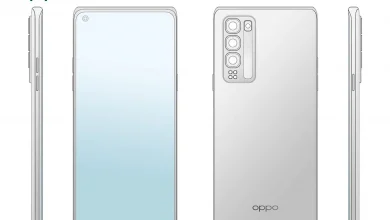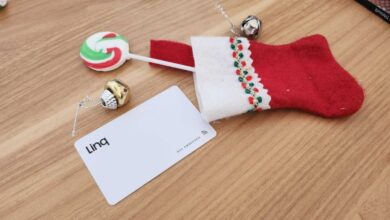Best Methodologies and Practices of User Research

UX research, which stands for user research, is an inseparable component of developing tech products, such as websites, software, SaaS, mobile apps, etc. This process involves studying the target audience to determine whether a new product meets their interests, needs, and expectations. This article dwells on how it can be conducted and what methodologies are available for making tech products more people-oriented.
User Research and Its Value for Product Development
User research is learning what end users like, what products they use, how they interact with them, etc. It is becoming increasingly popular in a customer-focused business world where the best companies are defined by their engagement with and understanding of their clients. In other words, UX research is based on a simple idea – always place your audience first. It emphasizes the importance of listening to customers, learning what they feel and need, and meeting their expectations.
It may be tempting to proceed with product development without delays. After all, why not? You have a team, money, and a good idea, so why wait for competitors to outdo you? However, skipping UX research is not a good idea if you want to create something really useful. Look at it this way: tailors don’t customize suits without taking measurements and doing the fitting. The same can be said about tech products – you cannot create them without knowing what customers need and how these products will fit into their daily lives, work, or education.
The absence of UX research may be risky money-wise. If you don’t know what your customers need, you rely on guesswork. Just imagine – your business plan is based on what YOU think people will like, not what they actually like. Justifying such a project may be difficult if you search for investment because no one wants to invest in ideas not supported with evidence.
Let’s summarize the benefits of UX research:
- Provides useful data for the product team
- Engages the potential customers
- Improves usability of the product
- Reduces risks
- Contributes to customer-focused design
Now that you know the value of customer research, it’s time to dwell on how exactly you can conduct it.
Qualitative vs. Quantitative Methods
All research methods can be divided into two broad groups focusing on textual data and relying on numbers and statistics. Qualitative research methods collect non-numerical data to learn about users’ opinions, feelings, experiences, behaviors, and motivations. These methods do not provide a broader perspective because of the limited generalizability of data collected from smaller samples. However, they are great for answering “why” questions. For example, why do users fail to finish onboarding?
Quantitative methods are more scientific. They imply the use of larger samples, which allows for eliciting reliable and generalizable findings. Compared to qualitative methods, they can obtain objective data less susceptible to bias and misinterpretations. Advantages of quantitative data include:
- Easy interpretation using statistical tools
- Suitable for creating graphics, pie charts, etc.
- More understandable for investors and team members
- More reliable and rigorous
However, quantitative UX research cannot explain why users do what they do, so relying on it exclusively is not recommended. The best strategy is to combine relevant qualitative and quantitative research methodologies at different stages of the project lifecycle to get an all-around view of the customer-product interaction.
User Research for Different Problems and Stages
Another way to classify user research methodologies is by arranging them into generative, descriptive, evaluative, and causal. UX researchers utilize generative research methodologies when they need to build a better understanding of users to come up with design solutions they will enjoy. This research is exploratory and normally conducted at the initial stages of product development.
Descriptive user research helps find the best path to addressing the identified design problem. It is all about describing, observing, and making conclusions that will inform the subsequent UX design decisions.
Next comes the evaluative stage of UX research. It is conducted to understand whether the design product performs as it should. Finally, causal research allows determining why users behave the way they do and what improvements can make their interaction with the product meaningful. Both evaluative and causal research studies are conducted at the later stages of product development when the design team has a specific product to test.
What Methods Are There?
Now, let’s dwell on the most common user research methods. Each has its strengths and weaknesses that need to be considered when choosing a suitable approach.
User Interviews and Focus Groups
When you think about qualitative information, the first thing that comes to mind is the interview. It’s not surprising, given that in-depth individual or group interviews are the best way to collect rich qualitative data on any topic, including product development. Interviews and focus groups have the following benefits:
- Help establish direct contact with users
- Generate detailed data
- Answer “why” and “how” questions
- Provide insight into users’ thinking patterns, ideas, and experiences
Moreover, interviews are easy to conduct due to the small sample. They are also flexible and can be used independently or in combination with other methods.
Interviews and focus groups can provide you with valuable data on each stage of the product development. For example, you can use them to learn what users lack in the existing products to develop better solutions or ask for their feedback regarding the beta version of your product.
While interviews may seem a very simple research method, they may be tricky if UX researchers do not know the basics of conducting qualitative interviews. Here are some to-go tips for eliciting accurate, reliable, and detailed data:
- Avoid yes/no responses
- Do not ask guiding questions
- Avoid opinionated questions
- Always ask “why” and “how”
- Don’t ask users to predict what they would do
You also need to be mindful of how you use the interview data. Since it is subjective and non-representative, you need to use it with caution. Opinions of a small group of people may not reflect what a wider audience feels and thinks about your product. You may also find it challenging to make sense of interview data and elicit answers to your questions, especially if you lack skills in qualitative data analysis.
Contextual Inquiry
This term refers to the time-honored participant observation, also called a field study. It’s easy to conduct because researchers can observe users in their natural settings (e.g., in public places or at work). It does not require extensive resources or specific research skills. You need to be attentive and notice how people interact with the product in question. The best thing about field research is that you can see how your product will work in a real-life setting.
Moreover, there is a low risk of recall bias that may tamper with interview data. Participants do not have to try to recall and describe how they used the product, what they felt, etc. In fact, they don’t have to do anything, meaning that it would be easier for you to involve the required sample. On the downside, observations can be subjective, as the results depend on researchers’ interpretation skills.
Diary
This qualitative research method is less popular than interviews or observations, which may be explained by its complexity. Researchers ask users to keep a diary, writing about how they interact with the product, what they feel, what challenges they experience, etc. Diaries require much time and dedication on the users’ side. However, they are great for tracking the changes in user-product relationships over time and gaining a better insight into users’ experiences.
Surveys
Surveys are very similar to interviews and focus groups because they ask users to answer a set of pre-determined questions. However, surveys are more large-scale as they involve a big sample. More importantly, they generate numerical data suitable for statistical analysis. In this way, UX researchers can learn how many percent of users perform specific tasks or how many of them are satisfied/dissatisfied with the product.
Surveys are great for reaching out to a large number of potential users. They do not require much time or effort from people, especially if they are well-organized and simple. Thus, it is a win-win methodology for everyone. However, to make sense of survey data, you need to have statistical analysis skills and be able to use statistics software such as SPSS.
Card Sorting and Tree Testing
Presented here as related research methodologies, card sorting and tree testing seek to understand how the content in a product should be categorized. Card sorting is a strategy most often used during the initial stages of product design. Researchers using this method ask participants to use cards to show how, in their opinion, the site’s information should be structured. It helps understand what content organization makes the most sense to users. The main benefit of the described strategy is that it helps create an intuitive product design.
Tree testing also contributes to creating page layouts or navigation menus. It involves asking the users to find information relying on a textual content only, in isolation from other design features. In this way, researchers can evaluate the findability of content and make changes if needed. Both methods are useful, but their application is limited to website or app content hierarchy.
Usability Testing
Usability testing helps evaluate how real users interact with your product. Participants are asked to complete a set of pre-determined tasks. Meanwhile, UX researchers observe their actions. This study can be conducted to achieve the following goals:
- Identify design issues
- Find ways to improve the product
- Learn about the target users’ preferences and behavior
Interestingly, usability testing can generate qualitative and quantitative data, depending on the research goals. Qualitative testing focuses on users’ experiences, opinions, and feelings expressed in words. In contrast, quantitative testing collects metrics that explain users’ behaviors and preferences more objectively. For example, researchers may look at specific metrics such as time on task, which shows how quickly users can understand what to do.
Usability testing is a flexible methodology that allows conducting research online or face-to-face. It means that you don’t have to invite your users to the office to test their interaction with the product. Screen-sharing software can help you collect the data even when you are in different locations. What does it mean practice-wise? You can enroll users from different locations and even countries, drawing a representative sample of your target customer base.
Five-Second Test
Users tend to evaluate the tech product very quickly. They need just a few seconds to understand whether they like it and whether it’s worth exploring further. Since you don’t have much time to impress users, you need to make the product visually appealing. The five-second test is a great methodology to achieve this goal.
The methodology is pretty simple. Participants look at the product (e.g., a website starting page) for five seconds. Then, UX researchers ask them about their first impressions:
- What did they enjoy?
- What was the most memorable part?
- Does the product look appealing?
- Would they explore it further?
If participants admit that the product did not look interesting or intriguing, you have a problem. It means the UI/UX design team should improve the design and structure aspects of the website further.
A/B Testing
If your team cannot settle on one design, A/B testing may be extremely useful. You invite a group of participants to use two different versions of a product, which may differ in design, color schemes, content organization, and other elements. Then, you compare people’s engagement with the product, their emotions, behaviors, etc. In this way, you allow the users to decide which version of the product they prefer.
Eye-Tracking
You probably know the saying that eyes never lie. This simple truth underpins another popular UX research methodology called eye-tracking. Its goal is to determine what product elements users look at the most and how their gaze moves as they interact with it. Tons of data can be collected through this methodology:
- In which sequence do users move?
- Which elements do they notice first?
- Which elements do they skip altogether?
- Which elements distract them?
- What information do they read fully, and what is only scanned briefly?
- How long do users look at specific elements?
All these data help understand how to improve the product to make the important information visible and increase usability.
Eye-tracking results can be presented in different forms:
- Mouse heatmaps that show when users click, scroll, or pause
- Opacity maps revealing the areas noticed the most and those ignored
- Gaze plots showing the sequence of eye movement
Researchers use remote eye tracking systems for eye-tracking studies. These involve specialized equipment that many tech companies currently manufacture. Once it’s installed on a user’s computer, UX researchers can collect valuable data unobtrusively. It may be costly, though, so this option is not accessible for small companies on a tight budget.
Product Analytics
Although this method also focuses on users’ behavior, it does not require their direct involvement in the study. UX researchers use analytical software such as Google Analytics to learn about metrics such as conversion rates, page views, bounce rates, etc. It is also great for collecting demographic data:
- Who are your users?
- Where do they live?
- How old are they?
- What browsers/devices do they use?
The main advantage of such data is its extensiveness. You can collect very detailed information about your users, their behavior, and the specifics of their interaction with the product. As a result, you can see what aspects of the product cause the greatest challenges and make amendments accordingly. However, analytics will not tell you why users act the way they do. In other words, it cannot answer the “why” question and help UX research get into users’ heads.
Personas
Strictly speaking, personas are not the UX research methodology but rather a technique for utilizing research results. A user persona is a half-fictional individual who possesses typical characteristics of a target audience. UX researchers create such characters based on the data they collected through user research:
- Demographic information
- Habits and preferences
- Product needs and expectations
- Typical patterns of interaction with a product, etc.
Personas are half-fictional because UX researchers complement the collected data with some fictional details to make users feel more realistic and relatable. Personas are also useful for communicating UX research findings to the team, investors, and other stakeholders. The main goal is to build empathy in product designers and encourage them to create products that real people will enjoy.
What Method Is Best for Me?
The number of UX research methods may confuse you. Which one to choose when they all seem useful? Of course, there’s no need to apply all of the listed methods. The choice will depend on the problem or gap in the knowledge you want to address, the product development stage, and available resources.
Aligning Research Methods with Goals
Conducting UX research just for the sake of it does not make sense. First, you need to have research questions bugging you. For example, let’s imagine you already have a beta version of a SaaS product. It’s working, looks decent, and seems that it’s ready to be released. However, you suspect there may be some unidentified bugs or usability problems. In such cases, usability testing is the most suitable research strategy.
Research at Different Project Lifecycle Stages
A project’s lifecycle stage also matters when it comes to choosing UX research strategies. For instance, the idea generation stage will require different methods and data than the testing stage. When you want to understand whether the selected UX design services bring value to your clients, you need a different approach than when you seek to identify technical issues.
Resource Limitations
It would be great to try as many UX research strategies as possible, wouldn’t it? But let’s be realistic. You probably don’t have that much time and money. In practice, the selection of research methods will depend on project deadlines, the size of the team, and financial resources. It means that if you are on a tight budget and in a hurry, diving deep into customer research is not your priority.
Takeaway Message
You create your product with the user and for the user, so UX research is an inseparable part of your work at all stages of product development. Make sure you combine qualitative and quantitative user research methodologies to collect diverse, exhaustive data. The more you know about your user, the more equipped you will be to create a usable, outstanding product that meets the most demanding requirements.




